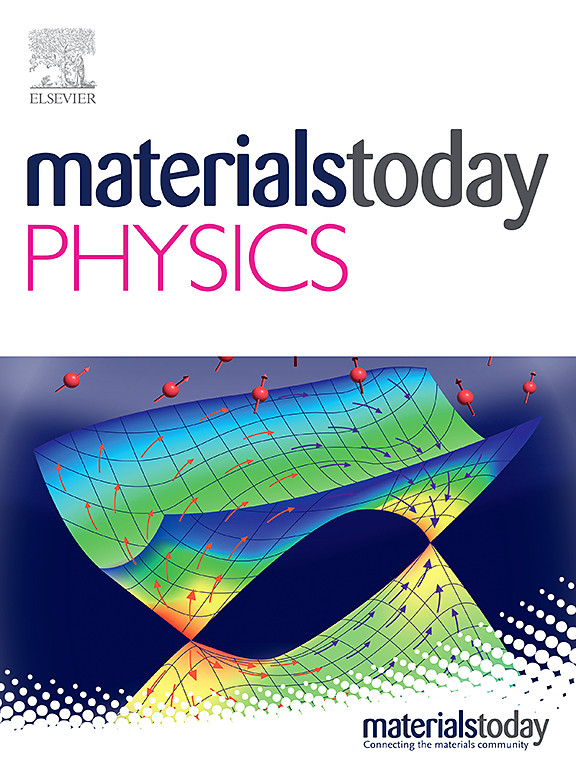Mist CVD technology for gallium oxide deposition: A review
IF 10
2区 材料科学
Q1 MATERIALS SCIENCE, MULTIDISCIPLINARY
引用次数: 0
Abstract
Mist chemical vapor deposition (mist CVD) technology originated from early metal organic chemical vapor deposition (MOCVD) techniques. By mist CVD, High-quality oxide films are deposited by ultrasonic atomization of low-concentration precursor solutions under atmospheric pressure and relatively low temperature conditions. Mist CVD was first reported in 1990, and in 2008, Shinohara et al. applied mist CVD to the growth of gallium oxide (Ga2O3) epitaxial films. As an ultrawide bandgap (UWBG) semiconductor, Ga2O3 has tremendous potential in power systems and optoelectronic devices, attracting significant attention and becoming a research hotspot in recent years. Various techniques have been explored for growing Ga2O3 films. Among them, mist CVD is noted for its relatively cheap equipment, simpler operation, and competitive cost advantages, making it a promising method for Ga2O3 film growth. Using mist CVD, five crystal phases (α, β, γ, ε, and δ) of Ga2O3 films have been successfully produced, and the properties of Ga2O3 films can be easily tuned through doping and alloy engineering. Additionally, semiconductor devices have been fabricated using Ga2O3 films grown by mist CVD. However, challenges remain in terms of doping uniformity, crystal phase purity, and stability. This paper reviews the advancements in mist CVD for the deposition of Ga2O3, covering mist CVD equipment design, Ga2O3 crystal phase control, doping and alloy modulation, and device fabrication.
用于氧化镓沉积的雾状 CVD 技术:综述
雾状化学气相沉积(MVD)技术起源于早期的金属有机化学气相沉积(MOCVD)技术。通过雾状化学气相沉积,在大气压力和相对较低的温度条件下,通过超声波雾化低浓度前驱体溶液,沉积出高质量的氧化物薄膜。雾状 CVD 于 1990 年首次被报道,2008 年,Shinohara 等人将雾状 CVD 应用于氧化镓(Ga2O3)外延薄膜的生长。作为一种超宽带隙(UWBG)半导体,Ga2O3 在电力系统和光电器件中具有巨大的应用潜力,近年来备受关注并成为研究热点。人们探索了多种用于生长 Ga2O3 薄膜的技术。其中,雾状 CVD 以其相对便宜的设备、更简单的操作和具有竞争力的成本优势而备受瞩目,成为一种很有前景的 Ga2O3 薄膜生长方法。利用雾状 CVD,已成功制备出五种晶相(α、β、γ、ε 和 δ)的 Ga2O3 薄膜,并可通过掺杂和合金工程轻松调整 Ga2O3 薄膜的性质。此外,利用雾状 CVD 生长的 Ga2O3 薄膜已经制造出了半导体器件。然而,在掺杂均匀性、晶相纯度和稳定性方面仍然存在挑战。本文回顾了雾状 CVD 沉积 Ga2O3 的进展,包括雾状 CVD 设备设计、Ga2O3 晶相控制、掺杂和合金调制以及器件制造。
本文章由计算机程序翻译,如有差异,请以英文原文为准。
求助全文
约1分钟内获得全文
求助全文
来源期刊

Materials Today Physics
Materials Science-General Materials Science
CiteScore
14.00
自引率
7.80%
发文量
284
审稿时长
15 days
期刊介绍:
Materials Today Physics is a multi-disciplinary journal focused on the physics of materials, encompassing both the physical properties and materials synthesis. Operating at the interface of physics and materials science, this journal covers one of the largest and most dynamic fields within physical science. The forefront research in materials physics is driving advancements in new materials, uncovering new physics, and fostering novel applications at an unprecedented pace.
 求助内容:
求助内容: 应助结果提醒方式:
应助结果提醒方式:


